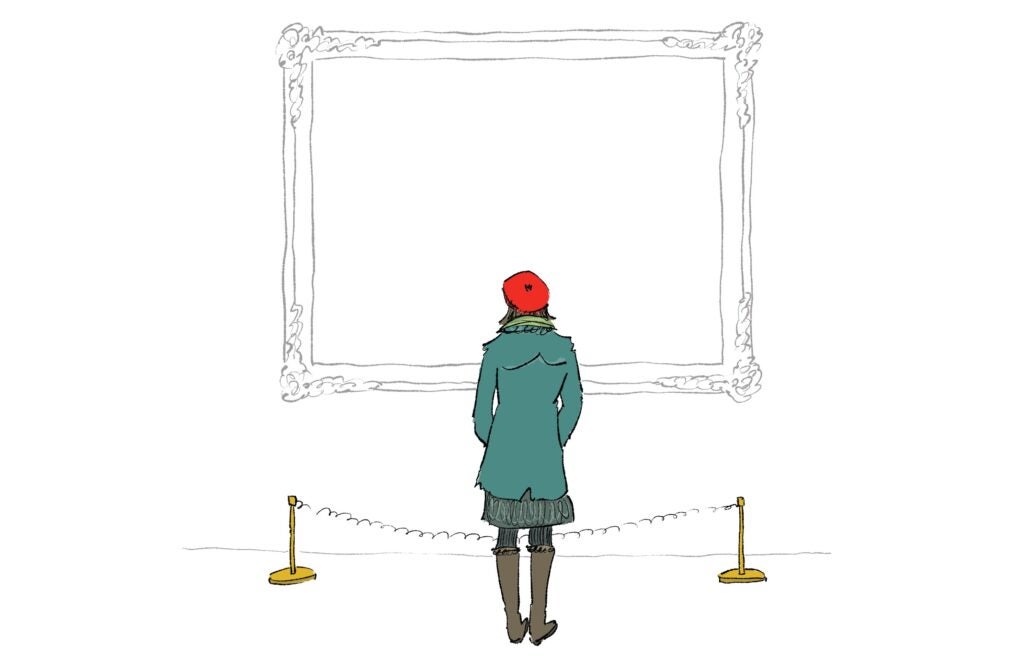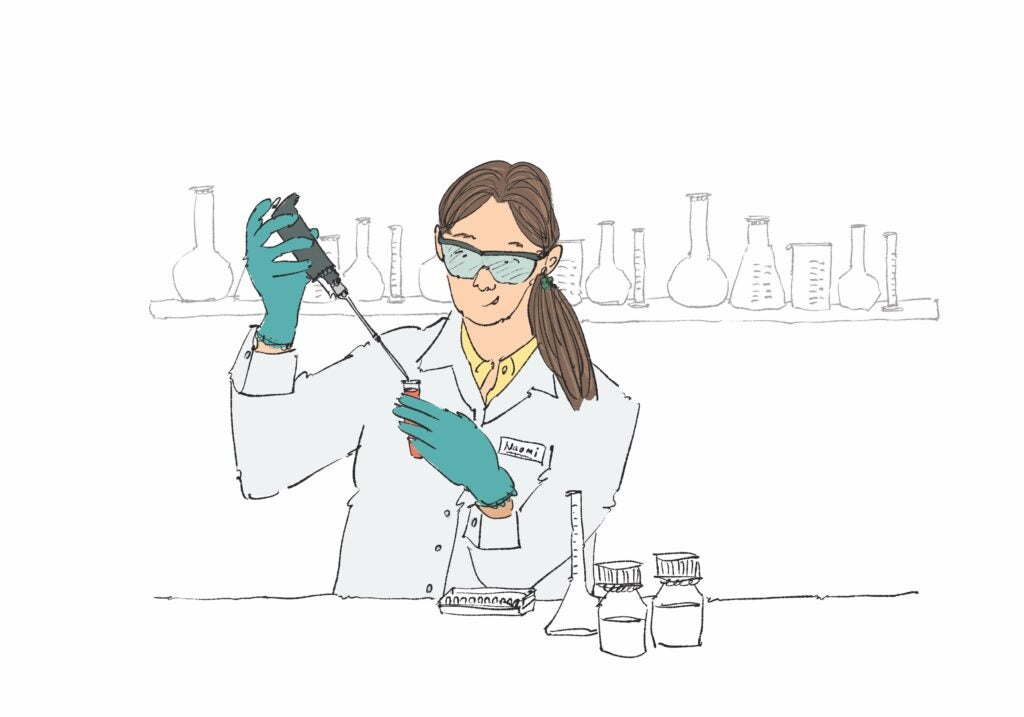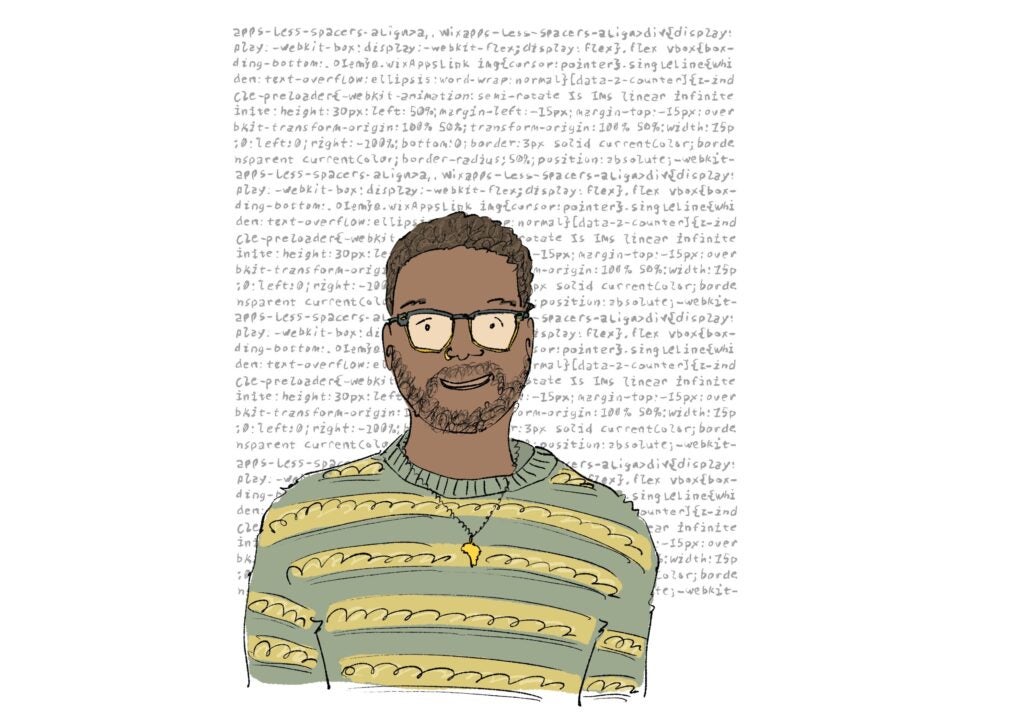Meet the Scholar: Emmanuel Assefa (C’27)
Emmanuel Assefa’s (C’27) participation in the Regents STEM Scholars program helped jumpstart his academic journey in the natural sciences.
Read Full Story
Students in the College of Arts and Sciences expand upon classroom learning with firsthand experiences in everything from genetic engineering and tech for good to religious understanding and political campaigns.
Learning by doing. Famed pedagogist John Dewey touted the now well-known concept in 1938, arguing that concrete experiences following actively engaged learning allow us to better act upon our understanding. It’s a best practice embedded in everything at the College of Arts and Sciences, from lab experiences and field trips completed as part of coursework to research projects and internships completed beyond. Here are just a few recent examples of how Hoyas are benefitting from it.
When Pratik Jacob (C’25) enrolled in Hans Noel’s Presidential Nominations Lab, he wanted a firsthand look at the process of politics. And right from the start, that’s what he got.

Pratik Jacob (C’25) expanded upon what he was learning in a course about presidential campaigns by traveling to Iowa and witnessing the process firsthand. Illustration by WACSO.
Instead of gathering in a classroom, the students met for the first time in an airport, where they boarded a plane to Iowa to brave subzero temperatures and observe democracy in action.
“I’m fascinated by how different electoral systems impact the prevalence/success of specific types of politicians, policies and politics,” said Jacob. “This class is a rare opportunity to experience firsthand how our politics and policy are shaped by the uniquely American system of presidential nominations.”
“At home, you don’t get the opportunity to feel the energy and buzz of a campaign as it goes through its ups and downs,” said Jacob. “Some candidates clearly inspired a lot more energy and buzz from their crowd than others, sometimes in unexpected ways. For example, I was surprised by how much more engaged Nikki Haley and Vivek Ramaswamy’s supporters were than Ron DeSantis’.”
Jacob recognizes that the energy in a room in Iowa doesn’t always result in better election turnout, but meeting voters in person, especially those showing up for a primary, was an invaluable addition to his understanding of American politics — one that gave him hope.
“The highlight of the course so far has been the conversations I was able to have with Iowans in the lead-up to the Iowa caucuses,” said Jacob. “Campaigns, intrinsically, are acts of hope — manifestations of the belief that, with the right leaders and policies, America and the world have brighter days ahead.
“It’s often difficult to preserve that optimism when I’m flooded with information from my classes, the media or my classmates about how broken the world is. It certainly is, but being around so many people, whose voices blazed with passion and vision for this country, reinvigorated my spirit.”
In the waning days of the 19th century, a cult-like group of post-impressionist painters formed a secretive brotherhood in Paris known as Les Nabis, which means “prophets” in Hebrew and Arabic. The artists were drawn together by a shared disdain for representational art and a communal longing to unlock mystic secrets.
Nami Bolat (C’25) spent the summer before her senior year studying the Nabis in the United States, Japan and France.

Nami Bolat (C’25) traveled to France, Japan and across the United States to study the artwork and mindset of the Nabis. Illustration by WACSO.
“I have always been abstractly interested in the interplay between the East and West, especially when it comes to spirituality and religion,” explained Bolat. “Time and time again, it seems like the West has looked to the East for inspiration that they can’t seem to find in their own religions.”
Many of the artists who considered themselves part of the Nabis were adherents to Theosophy, an occult movement that sought to unlock core truths through a synthesis of world religions.
“My research has uncovered that Theosophy seems to have been the most prominent religious influence on the group while the Japanese influence was mostly an aesthetic one,” said Bolat. “Theosophy’s attempts to amalgamate or find commonalities between all religions and world views are fascinating, a bit frightening and another example of how the West interacted and continues to interact with the East, both positively and negatively, on the spiritual and religious plane.
Bolat’s travels and research were funded through a Royden B. Davis Research Fellowship. Every year, the College of Arts & Sciences awards undergraduate students fellowships between $1,000 and $5,000 to explore “transformative educational experiences.”
Given in honor of Fr. Davis, Dean of the College of Arts & Sciences from 1966 to 1989, the fellowship empowers students to pursue avenues of interest that extend beyond the boundaries of the classroom, encouraging the curiosity that is at the heart of a liberal arts education.
For Bolat, her summer experience not only expanded her horizons, but allowed her to connect her personal identity, interests and area of study. Bolat, who has relatives in France and Japan, was able to reconnect with family while studying the Nabis.
“I began my travels afraid I was about to face a tremendously lonely journey, worried that my subpar Japanese wouldn’t be enough to feel close to the family I’ve left behind there, worried to be all alone wandering around Paris,” said Bolat. “I was proven completely and utterly wrong.”
Naomi Greenberg (C’24) was one of five Hoyas to be named a 2024 Marshall Scholar. Greenberg, a biology major and journalism minor, spent her time as an undergraduate unifying her love for research and her passion for writing.

Interest in genetic engineering became tangible for Naomi Greenberg (C’24) during an internship at the National Institutes of Health. Illustration by WACSO.
Greenberg not only conducted research into molecular biology, molecular genetics and evolutionary genetics, but explored other passions both on the Hilltop and beyond. She spent all four years involved with The Hoya, working as a copy assistant, copy deputy and copy chief. She then founded and led the publication’s Science section.
Her research interests now, however, focus on genetic engineering, when humans alter an organism’s DNA. That interest began during an internship at the National Institutes of Health, where she worked in a lab studying chromosome dynamics and evolution. Greenberg observed the phenomenon of natural gene drives—or the ability for some genetic traits to be passed on more rapidly—in mice. According to Mendel’s Law of Segregation, that ability shouldn’t be possible — two alleles of any gene should have an equal chance of being transmitted.
“The experience of seeing a real gene drive system in action at the NIH was pivotal for me,” said Greenberg. “Witnessing firsthand an exception to the so-called ‘laws’ of genetics turned my theoretical interest into a practical one, and ignited my motivation to become a gene drive researcher.”
In Greenberg’s eyes, genetic engineering is likely here to stay and that means creating scientific consensus around the morals of the issue and communicating to the public what it means and why it is important.
“Naomi is a special scholar — some are good at generating questions and others at working toward their answers. And then there is Naomi, who is unusually good at both,” said Manus Patten, a teaching professor of biology who mentored much of Greenberg’s research. “It’s going to be fun over the next few years to watch as she makes the most of these opportunities. I feel like we’re at Cape Canaveral here, watching a scholar launch.”
The summer before graduating from the College of Arts & Sciences, Kwabena Sekyere-Boateng (C’23) completed a 10-week research fellowship with the MIT Institute of Data, Systems and Society. His research examined the complex ways in which technology can both reinforce and tear down systems of hierarchy and oppression.

Drawing on his computer science studies, Kwabena Sekyere-Boateng (C’23) developed a computing curriculum that empowers marginalized communities. After graduating in December, Boateng relocated to Ghana where he is already putting his framework into action as a computer science teacher. Illustration by WACSO.
Sekyere-Boateng’s work was fully funded through a Station1 Frontiers Fellowship, a selective program that empowers undergraduates in STEM to gain real-world research experience in socially-directed projects.
“Receiving the fellowship was exhilarating; it not only felt validating and affirming but also gave me a sense of belonging,” said Sekyere-Boateng, a computer science major and disability studies minor. “It underscored the reality that there’s a longstanding tradition of socially-directed science, and a vibrant community supporting it.”
Sekyere-Boateng conducted research as part of a group whose objective was to investigate how transformative, technology-based educational experiences can empower marginalized communities. They relied on the Critical Participatory Action Research, or CPAR, a research framework suited for “documenting, challenging and transforming conditions of social injustice.”
“My research stemmed from interrogating how computer science as a discipline is often presented as neutral; however, it is a tool that perpetuates and reifies structural oppression,” said Sekyere-Boateng. “We focused on addressing this issue, particularly how computer science can also be used as a tool to combat structural oppression and empower marginalized communities.”
The group worked out of a computer lab at Camfield Estates, a federally funded voucher co-op in Boston, which has been described as “an oasis in a desert of affordable housing.” The community has a long-standing collaboration with MIT.
“The initial phase involved developing a curriculum tailored for participants aged 10 to 15, which was both accessible and enriching, guided by liberatory computing principles,” explained Sekyere-Boateng. “Liberatory computing illuminates how computing curricula can empower African-American students with skills to address societal racism.”
For Sekyere-Boateng, his Station1 Fellowship felt like the culmination of an educational transformation that started when he first set foot on the Hilltop.
“What truly excited me was that it was the first space where my interests really intersected. Often, being the only, or one of the very few, Black students in a classroom can be isolating,” said Sekyere-Boateng. “However, this fellowship afforded me the opportunity to scrutinize computer science through the lenses I acquired from my other academic pursuits.”
Today, teaching computer science through a liberatory computing framework in Ghana, Sekyere-Boateng is following through on the ambitions and skills he honed as an undergraduate.
Emmanuel Assefa’s (C’27) participation in the Regents STEM Scholars program helped jumpstart his academic journey in the natural sciences.
Read Full Story